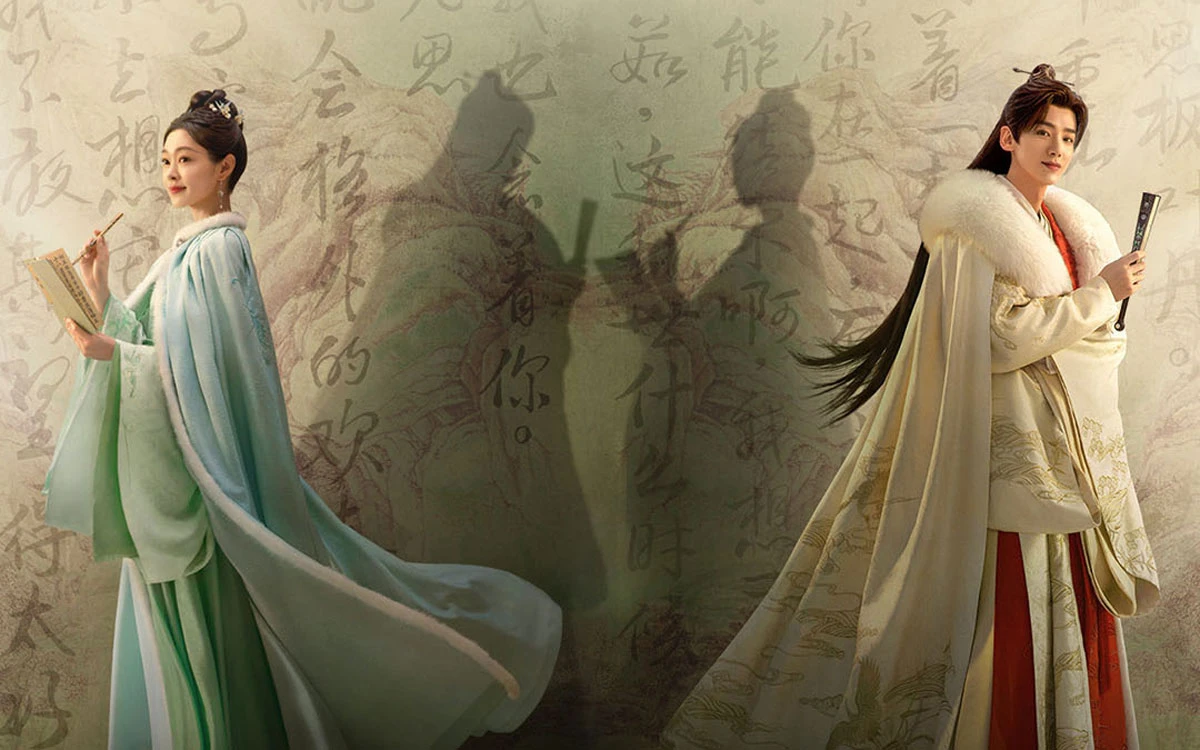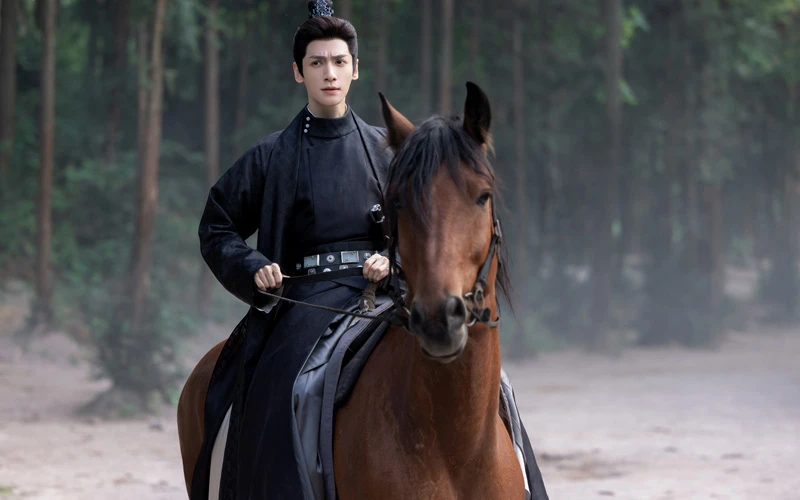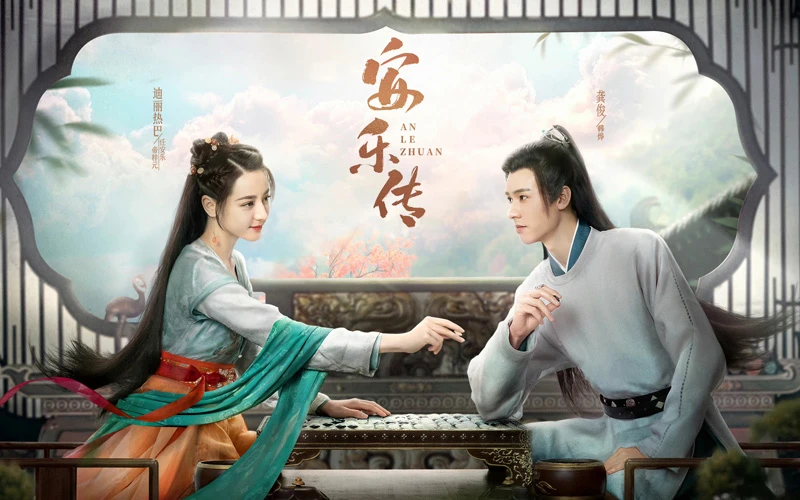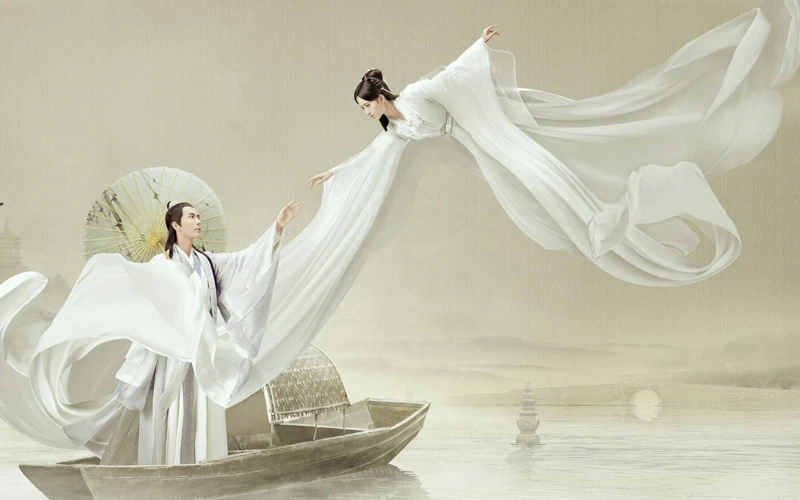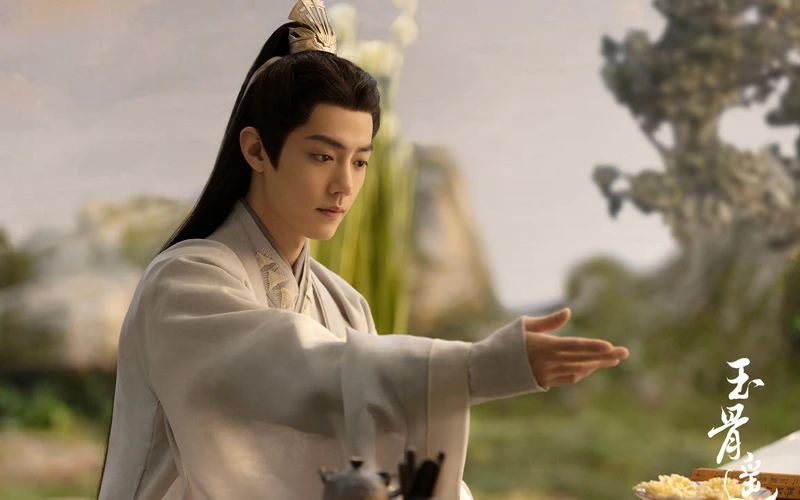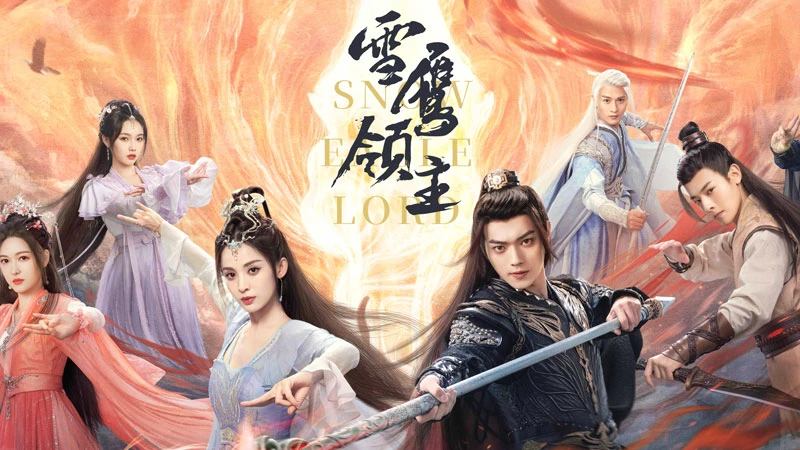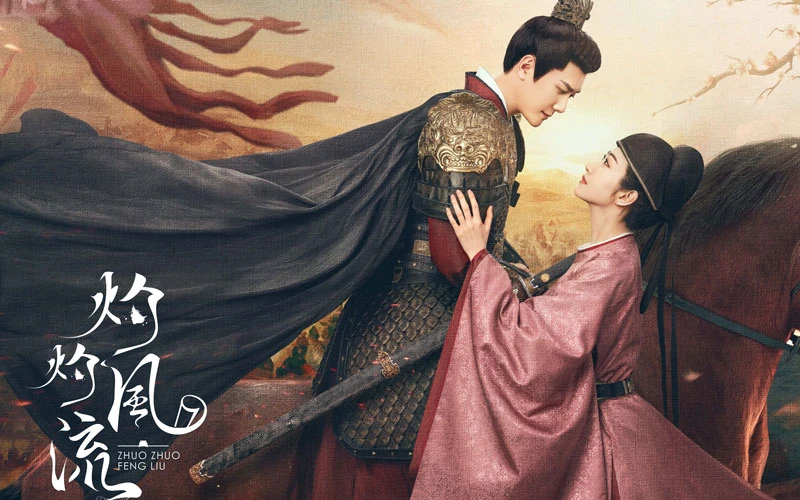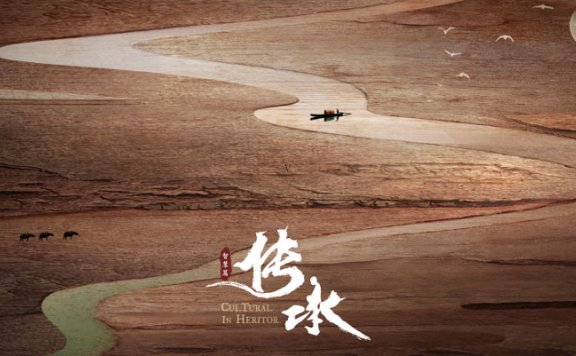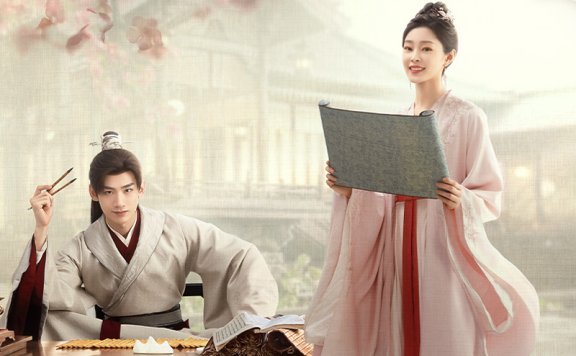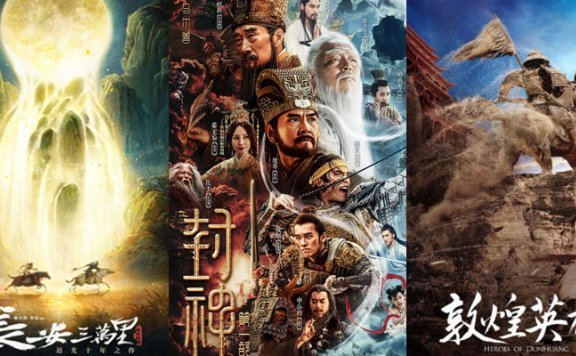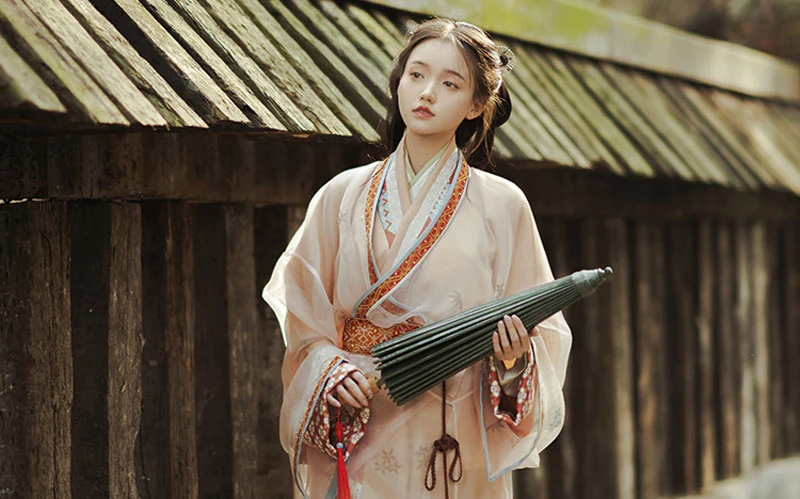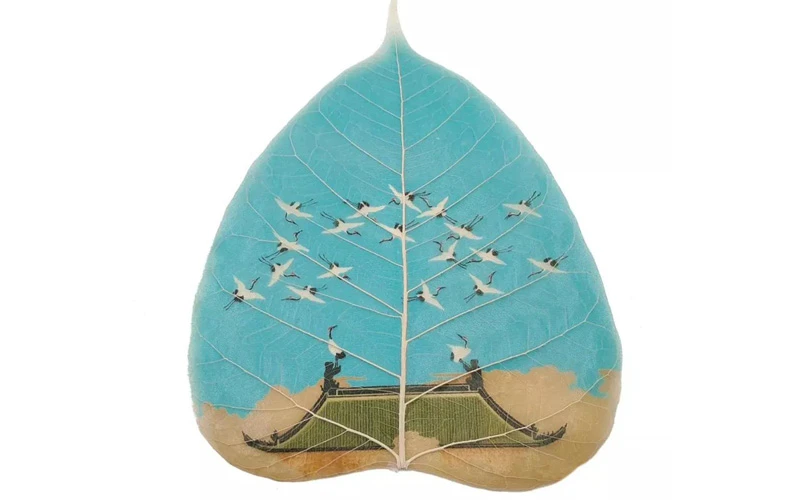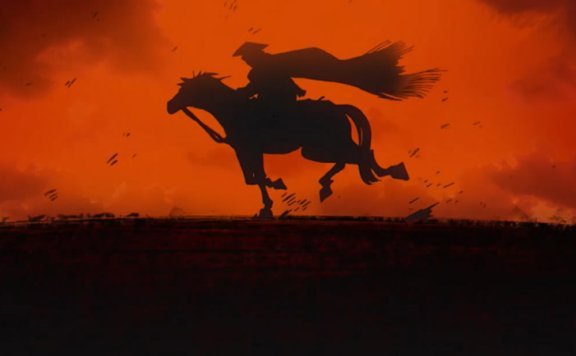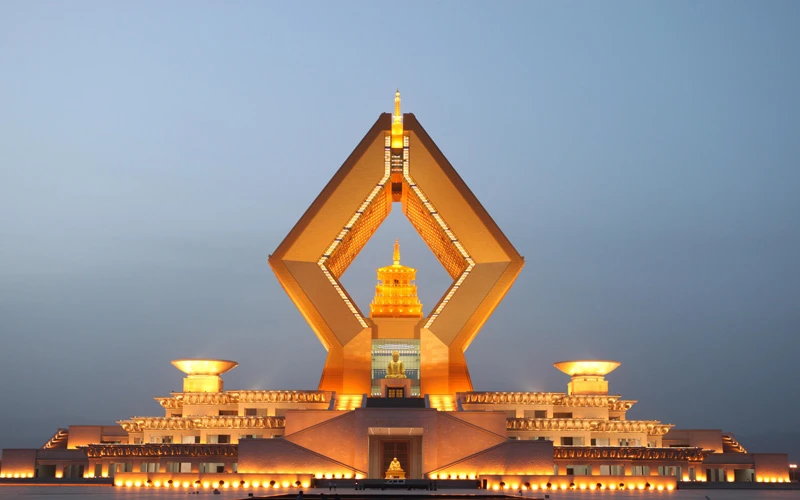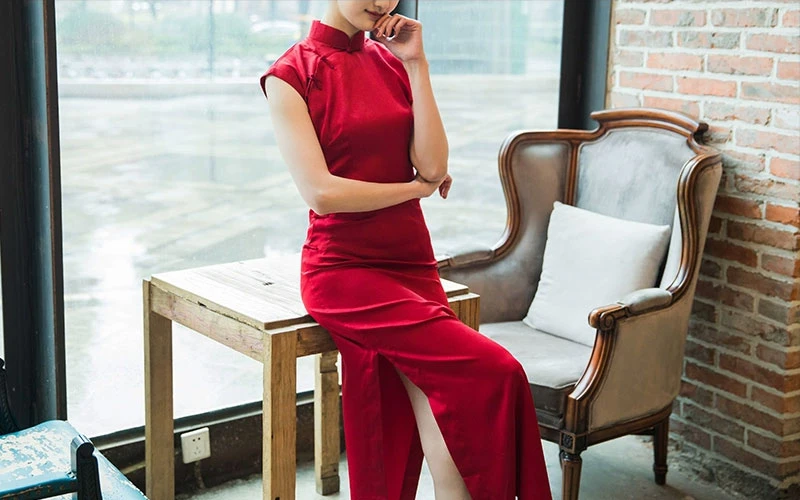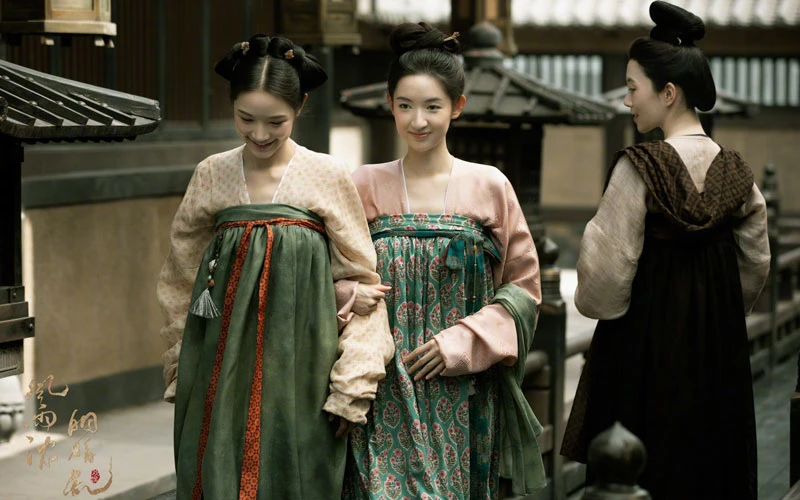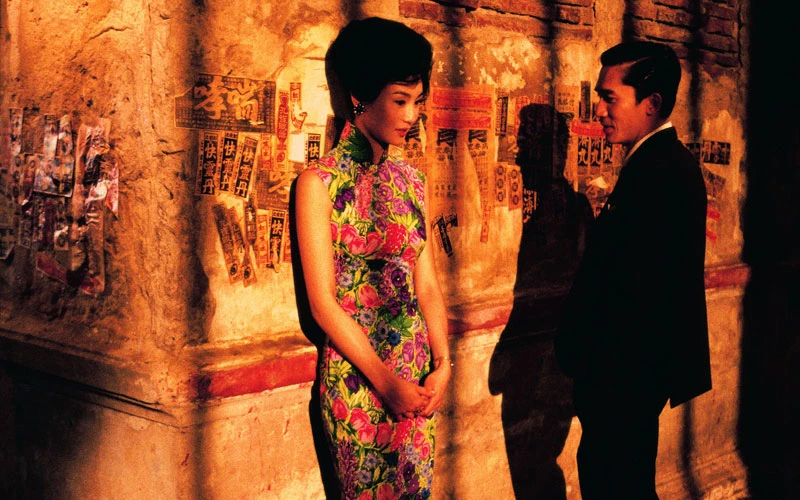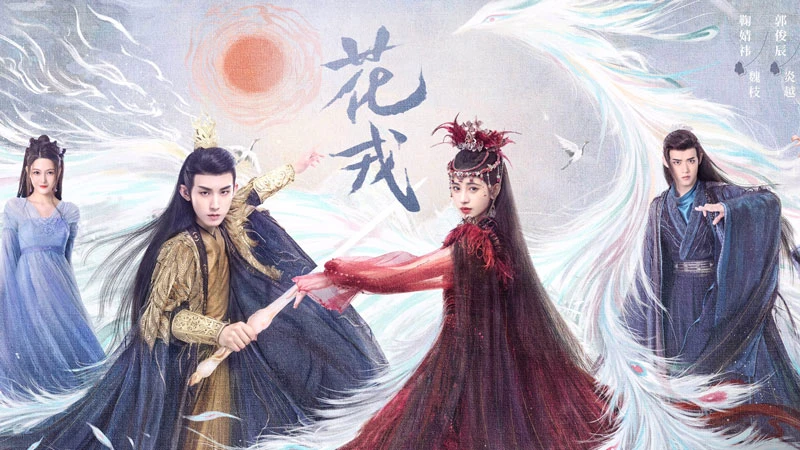Article
搜索结果:
-
2023 Chinese Costume Dramas List That Worth Watching
In 2022, plenty of wonderful Chinese costume dramas accompany us. For example, the military and espionage drama "The Wind Blows From Longxi" based on the Three Kingdoms period; "Luoyang" and "Strange Legend of Tang Dynasty" set in the Tang Dynasty; "A Dream of Splendor" set in the Song Dynasty; "Imperial Cuisine" and "The Imperial Age" with the Ming Dynasty background; and the latest Qing Dynasty theme drama "The Long River". There are still some dramas in the 2022 to-broadcast list that have not yet aired, check them out here. The following is a list of Chinese costume dramas in 2023, as compiled by Newhanfu. Destined · 长风渡 (Aired) Aired: June 18, 2023 Also known as: Chang Feng Du Period Background: Alternative Reality Genres: Historical, Romance Main Role: Bai Jing Ting as Gu Jiusi, Song Yi as Liu Yuru, Liu Xue Yi as Luo Zishang Plot summary of Destined The drama "Destined" is based on Mo Shubai’s novel of the same name. Liu Yuru (柳玉茹, played by Song Yi), the daughter of a cloth merchant, has been suffering from her mother's illness, her concubine mother's lack of mercy, and her father's lack of attention since she was a child, so she… -
Recent Chinese Costume Detective Dramas: Genre Change and Subject Innovation
Chinese costume detective dramas have finally gained momentum. In September of last year, when "Strange Tales of Tang Dynasty" just premiered, the industry exclaimed, "It has been a long time since we've seen a costume detective drama." Little did all know that in just ten short months, over a dozen historical Chinese costume detective dramas would be ready for release. In the history of Chinese dramas, costume detective dramas have achieved remarkable success. From the "Justice Bao" series in the 1990s to the drama series "Witness to a Prosecution" in the new millennium, and then to "Young Justice Bao," "Amazing Detective Di Renjie," and "Judge of Song Dynasty," this genre has paved its way with equal brilliance as historical dramas. Unfortunately, in recent years, costume detective dramas haven't been very popular. However, with the emergence of shows like "Young Blood" and "Ancient Detective," this genre is once again at the forefront of the industry. The success and popularity of "Strange Tales of Tang Dynasty" showcase how these types of dramas have accumulated strength over time and are now poised for further development. Currently, Chinese costume detective drama have presented four subgenres: strange, romance, female-oriented, and patriotism. Among these subgenres, the… -
The Legend of Anle: A Blend of Laughter and Adventure in the Realm of Hot-Blooded Dramas
On July 12th, the costume drama "The Legend of Anle" took over from "Hidden Love", bringing a second wave of cdrama frenzy for the summer season. The premiere episode delighted viewers with amusing plot points such as "gazing through veils," "mutual rescue at sea," and "proactive marriage proposals." "The Legend of Anle" tells the story of Ren Anle, a righteous individual dedicated to the well-being of the people. While investigating a family mystery, she gains recognition from Prince Han Ye, who shares her commitment to their family, country, and citizens. As one of the highly anticipated dramas for the summer season, "The Legend of Anle" quickly captured audience affection with its compelling characters, light-hearted comedy elements, and profound themes – securing its position as number one on popular ranking charts. Multi-dimensional characters Historical costume dramas have always been favored by audiences; however, with an abundance of similar content available today comes a certain level of viewer fatigue caused by formulaic productions that perpetuate gender stereotypes like dominant men and weak women. In truth, it is the characters themselves that form the core essence of any story. The success or failure of a drama hinges upon whether these characters can… -
A New Era for Xianxia Dramas: Exploring the Changing Landscape of Immortal Tales
For a long time, the genre of Xianxia dramas has always been an important category in Chinese television productions. Whether it's the once dominant and repeatedly aired "New Legend of White Snake", or the pioneering work of contemporary Xianxia dramas, "Chinese Paladin", or the 2017 sensation that sparked a craze "Eternal Love", Xianxia dramas are an inevitable subject in Chinese TV series creation. And beneath the fantastical world and martial heroes lies its ever-changing core, the values of changing times. Classic values in Xianxia drama series When reminiscing about Xianxia and monster-themed dramas you have watched, you may immediately think of classics such as "Journey to the West," "New Legend of White Snake," and "Gods of Honour" which were adapted from Chinese folk legends and historical texts. Underneath their classic stories, these immortal drama series possess lasting vitality undoubtedly related to their fundamental narrative logic. For instance, at its essence, "Journey to the West" is a tale of team adventure where protagonists undergo different forms of growth after facing conflicts and difficulties. The protagonist often embarks on a journey alone or with a team to search for something but ultimately discovers that what they find isn't tangible treasure but… -
Fantasy Drama The Longest Promise: Love, Destiny, and Unforgettable Adventures
On July 2nd, "The Longest Promise" premiered. Directed by Jiang Jiajun and starring Xiao Zhan and Ren Min, this fantasy romantic love story captivates without the need for lengthy world-building narration. "The Longest Promise" begins with a retrospective narrative of the female lead Zhu Yan (played by Ren Min) fleeing from her wedding. It then delves into the main storyline of the male lead Ying Shi (played by Xiao Zhan), who was framed, faked his death, and left the palace during his youth. The intertwining of their growth and fate unfolds as they meet at Jiuyi Mountain's celebration. Since its debut, this drama has engrossed viewers with its lively storytelling pace, providing them with a rich blend of humor, sweetness, and heart-wrenching moments. Combined with a fresh worldview and Eastern fantastical aesthetics that enhance the audiovisual experience, "The Longest Promise" has become a focal point of discussion on social media platforms. The Eastern fantasy colors in "The Longest Promise" are not only superficial but also ingrained in its essence. Behind the immersive Eastern aesthetic ambiance lies the emotional core that shines brightly, the mortal struggle against destiny undertaken by Ying Shi and Zhu Yan illuminates their captivating bond. Eastern… -
Snow Eagle Lord: A Mesmerizing Tale of Xianxia and Fantasy
The hot-blooded Xianxia drama "Lord of Snow Eagles," directed by Li Dachao and starring Xu Kai, Gulnazar, Bai Shu, and Lu Tingyu, is currently airing. This drama is adapted from a novel of the same name. The story revolves around Dongbo Xueying, a young man with an ancient bloodline, who becomes entangled in the conflict between righteousness and evil as he strives to save his mother. Along the way, Xueying meets and falls in love with Yujingqiu, a descendant of the divine race. Together, they overcome numerous obstacles and eventually grow into the legendary Lord of Snow Eagles that shines brightly in the Orient. Xianxia dramas have always been popular among young audiences in Chinese film and television productions. Creating a unique worldview is often essential for such dramas. In terms of production value, Xianxia dramas tend to have relatively high costs due to special effects shots, action choreography, green screen editing skills etc., which require time and financial resources. Some large-scale productions even rely on CG technology to enhance visual effects. "Lord of Snow Eagles" has indeed created an expansive and innovative world view. Its fight scenes and special effects are commendable; if we overlook its conventional plotlines and focus… -
A Glimpse into Zhuo Zhuo Feng Liu: Anticipation Builds for the Upcoming Romance Drama
Although currently "Destined" and "Snow Eagle Lord" and other costume dramas are gaining momentum, their achievements are also impressive enough. However, compared to the upcoming lineup of dramas set to premiere in the summer season, they are clearly just an appetizer. Aside from highly anticipated works like "The Longest Promise" and "Lost You Forever," there is also a quality production called "Zhuo Zhuo Feng Liu," starring Feng Shaofeng and Jing Tian. With its strong production value, compelling story, and talented cast, especially after the release of its trailer in recent days, it has gained even more attention. The TV drama "Zhuo Zhuo Feng Liu" is directed by the powerhouse director Wen Deguang. This director has previously created acclaimed works such as "Dr. Tang." The collaborating screenwriter Wang Hong is also a leading figure in the industry. In addition to that, with the main storyline focusing on the growth and aspirations of our female protagonist who strives for success in her career as an official named Mu Zhuohua, as well as her redemption and love affair with Liu Yan, a warrior burdened with national grudges, who fights valiantly on bloody battlefields; this story truly embodies a captivating narrative. In this first… -
Capturing the Spirit of Qu Yuan: Exploration of the Iconic Chinese Poet
The Dragon Boat Festival (Duan Wu Festival, 端午节) is considered one of the oldest traditional folk festivals in China, alongside the Spring Festival, Qingming Festival, and Mid-Autumn Festival. According to records, the Dragon Boat Festival originated from the worship of celestial phenomena and evolved from ancient dragon rituals. The Dragon Boat Festival is an auspicious day associated with this imagery of a soaring dragon; thus, both dragons and dragon boat culture have always been an integral part of its historical legacy. The term "Duan Wu" itself first appeared in Fengtu Ji during the Jin Dynasty. However, nowadays when most people mention the Dragon Boat Festival, they often associate it with Qu Yuan's legend. Legend has it that on the fifth day of the fifth month of the lunar calendar, Qu Yuan tragically sacrificed himself by plunging into Miluo River out of loyalty to his country. Upon hearing this news, local villagers rushed to their boats to rescue him. Worried about their speed not being fast enough, they vigorously rowed while also fearing that fish would devour Qu Yuan's body, hence throwing rice dumplings into the river. Later on, people designated the fifth day of the fifth month of the lunar… -
The Evolution of Chinese Drama in 2023 - Breaking Boundaries
In June 2023, the Chinese television industry entered summer along with high temperatures. At the beginning of the month, the first China Drama Conference was held in grand style. Meanwhile, after a year's hiatus, the Shanghai Television Festival reopened its doors. The industry's exhibition & activities were among the first to resume, bringing back smiles on people's faces who had not seen each other for a long time. Production started slowly with only a few projects underway but picked up pace suddenly in May as 27 new productions began filming during that month alone - matching those from all three months of Q1. The quality of dramas receiving high reviews has significantly improved compared to previous years. Outstanding works have found their recipe for success against short videos' challenges. In June, four historical drama series that had been quiet for many years successfully passed regulatory filing procedures and reignited dreams within this once glorious genre. At this moment, important changes are happening in creating Chinese dramas. Insights from hit dramas The above are the popular dramas that aired during the first five months of 2023, with most premiering in the first four months and one in late December last… -
Cultural Inheritor: New Ideas for Documenting Traditional Craft Heritage
Eight years ago, the first season of "Inheritor" (2015) premiered. This documentary series focused on the skills and emotions of inheritors of intangible cultural heritage, showcasing little-known traditional techniques to the public and arousing people's interest in experiencing, watching, and exploring intangible cultural heritage. Eight years later, what kind of sparks can be generated when traditional intangible cultural heritage collides with modern technology? On June 10th, the documentary "Cultural Inheritor" premiered. Based on inheriting outstanding traditional culture and holding a modern scientific perspective, this program allows ancient techniques to collide with modern technology while further examining the civilization codes hidden in intangible cultural heritage. It not only showcases the charm of integrating culture and technology but also helps tell stories about intangible cultural heritage while conveying China's cultural charm and confidence to audiences worldwide. Perceiving the aesthetic value of drama and technology The inheritance and innovation of intangible cultural heritage cannot be separated from generations' adherence to tradition while innovating. "Cultural Inheritor" excavates true stories between inheritors and projects, telling stories about intangible cultural projects through dramatic means while recounting wonderful life experiences by inheritors. With advances in technological methods, there are now more opportunities for projects related to… -
Latest Romance Costume Drama Destined: Discovering the Allure of Love Amidst Intrlegance
On June 18th, the romance costume drama "Destined (Chang Feng Du, 长风渡)", adapted from the novel of the same name by author Mo Shu Bai, directed by Yin Tao and starring Bai Jingting and Song Yi, began airing. The main characters are well-defined and the plot progresses rapidly. As for the current plot, it has outstanding highlights and logical development. As a debut in the summer of 2023, it has stabilized its position. The plot of "Destined" is full of ups and downs while also paying attention to family and national sentiments. The casting and filming were highly anticipated, not to mention that after wrapping up production, lead actors Bai Jingting and Song Yi were rumored to be in a relationship. Fans as well as viewers who enjoy costume dramas are eagerly anticipating watching this ancient love story which combines palace intrigue, business endeavors, and imperial court politics. The female lead Liu Yuru. She is an aristocratic daughter from a cloth merchant's family but her father is notorious for favoring his concubines over his wife. Liu Yuru was never valued by her father growing up; her stepmother was unkind towards her while her biological mother suffered from serious illness. This… -
Revival of Chinese Ancient Costume Films: List of 2023 Pending Blockbusters
This summer, the most anticipated film is undoubtedly "Creation of The Gods Ⅰ: Kingdom of Storms". Originally scheduled for release in the summer of 2020, this mythological blockbuster will finally meet audiences on July 20th. Although some industry insiders are cautiously optimistic about its box office performance, it cannot be denied that it has already raised audience expectations to their fullest. With the announcement of this large-scale investment movie's release date, another phenomenon is emerging: a resurgence of ancient costume films. Of course, "Creation of The Gods" is not alone in this trend. During the Shanghai International Film Festival, Beijing Baination released their film lineup which includes three costume films: Cao Dun's directed and Ma Boyong's scripted "Heroes of Dunhuang", Wu Youyin's self-written and directed "Sha Hai Zhi Men (沙海之门)," and “Su Wu”. Also during the same festival was when Bona Film Group Co announced twenty new films with historical themes including costume dramas such as “Fighting for Love”, “The Story of the Stone” & “The Legend”. If we include movies like last month’s poster-released "The Legend of the Condor Heroes: The Great Hero" and other films that have been rumored since last year such as"Zheng He Xia Xi Yang:… -
The Enduring Legacy of Jiaoling Youren in China: History and Cultural Significance
The "Jiaoling Youren (交领右衽, cross-collar-and-right-wrapped, the left lapel covers the right lapel when wearing)" based on flat cutting is a typical collar that has been passed down in the Chinese civilization for thousands of years. It fully embodies the diverse and integrated pattern since ancient times, carries Chinese common cultural connotation as a nation, and is a symbol of the spiritual essence extracted from the long history of Chinese civilization. Chinese traditional costumes are profound and have a long history, Jiaoling Youren is like main threads linking thousands of years' of flowery clouds together to inherit continuously with boundless beauty. The character "衣 (clothing)" already existed in oracle bone script which reveals its structural feature: two lapels overlap each other forming into textual symbols. 01 What is Jiaoling Youren One of the most prominent features of Hanfu is the collar design that crosses left over right to form a "Y" shape known as the Jiaoling Youren style. This collar design has more than 5,000 years of history since Zhou Dynasty. Even though Hanfu keeps innovating with different styles such as straight collars, tank tops, and stand-up collars, the cross-collared Hanfu still maintains its mainstream position among these styles. … -
Leaf Painting Takes Root: Ding Li's Guardian of China Cultural Heritage
Leaf painting, also known as leaf carving, originated in the Zhou Dynasty and flourished during the Tang and Song Dynasties. It uses the natural form of leaves and cleverly utilizes their natural veins to create stunning works of art. The work is delicate like a cicada's wings, with natural colors that transform decay into magical beauty. However, due to its difficulty in preservation, many exquisite pieces have been lost over time causing this craft to nearly fall into oblivion. Last August though Ding Li's leaf painting artwork series depicting "Along the River During the Qingming Festival" went viral bringing this ancient yet captivating technique back into public view. Ding Li hails from Xianyang City in Hubei Province and has loved painting since he was five years old experimenting with sketching, watercolor painting, and oil paintings while also dabbling in woodcarving, bamboo-carving, stone-carving, nuclear carving etc., all out of pure interest for these different forms of artistry. At thirteen years old he attended an art exhibition where he saw an elderly man using small knives to carve on leaves; fascinated by what seemed like magic he watched him work for almost two hours before being asked if he wanted to learn… -
Blades of the Guardians: A Fresh Take on Traditional Chinese Martial Arts Culture
After experiencing the oriental beauty of "The Island of Siliang" and the passionate combat in "Douluo Continent", what other expectations can we have for Chinese animation? The release of stylized martial arts animation "Blades of the Guardians" on June 1, 2023, surprises us with something new. Unlike the recent popular science fiction or immortality themes on various streaming platforms, Chinese martial arts finally becomes the theme again in the animated series "Blades of the Guardians (Biao Ren, 镖人)". A mysterious middle-aged martial artist, with a thin horse and a young child, walks in the desert outside of the country. He negotiates deals with bandits while making friends among commoners, he is both a armed escort and possesses an adventurer's courage. This character has rekindled memories of martial arts within society after only four episodes aired. Some see it as embodying Wuxia aesthetics; others use it to refute claims that martial arts are dead - even inspiring some to pick up original comic books once more. For a long time, whenever the content industry reached certain points, it was necessary to discuss the disappearance of martial arts theme. It is believed that lack of audience interest and reluctance from production teams… -
14 Niche China Museums to Explore Ancient Cultural Treasures and Fascinating Histories
In the previous article, the top 20 Chinese museums worth visiting in China were introduced to you. Then, in this article, 14 niche China museums were selected that each represents a specific period in Chinese history, connecting them together to form a visible development context of Chinese history. 01 The Earliest China If we were to compare different stages of Chinese history to different times of day, then the Liangzhu Civilization would be the pre-dawn. From childhood, the concept of "5000 years of Chinese civilization" has been deeply ingrained in Chinese minds. And Liangzhu marks the beginning of those 5000 years. Liangzhu Museum Before the emergence of Liangzhu civilization, what did China look like? Cultural relics such as Hemudu, Banpo and Hongshan can be found from the Yangtze River to Yellow River and even further north in Liaoning and Inner Mongolia. Crossing over from culture to civilization, mark an entirely new stage in human social development: settlements continued to develop, forming embryonic forms of early cities; labor was effectively organized, and massive water conservancy projects with storage capacity reaching 46 million cubic meters (more than three West Lakes) were built to resist floods; meanwhile, surplus productivity was sufficient enough… -
9 Common Misunderstandings about Cheongsams Debunked
As a typical representative of Chinese traditional clothing culture, cheongsam has fascinated people around the world with its outstanding form. Although there are still many disputes over the definition of cheongsam today, it remains one of the most splendid and formal dress cultures in China's long history. At first, the style of Chinese cheongsam had tight cuffs, narrowed edges, slightly embroidered patterns and slightly longer hemlines. In the late 1920s, influenced by Western skirts, cheongsam underwent more obvious changes, tightening waistline to highlight curves and simplifying decorations. Cheongsam became a fitted curve shape that first reflected women's features such as concave-convex lines and laid a foundation for today's basic characteristics and fashion trends in women's wear. After the 1930s and 1940s, Chinese cheongsam reached a perfect maturity in design becoming world-renowned classic attire - this was also the peak period for cheongsams. High-collared necklines with waists sucked-in tightly; short sleeves fastened with knots or buttons; slanting fronts often opened high on one side; some dresses were short while others were long; cutting styles followed western skirt designs emphasizing smoother lines which made Chinese Cheongsams fit better to display female beauty figures. When wearing a Chinese Cheongsam dress woman’s graceful figure… -
Gone with the Rain: Adding a New Chapter to the Female Costume Drama Genre
"Gone with the Rain" is a female costume drama led by Zhang Nan, Wang Yuwen, Sun Yizhou, Zhao Yingbo and Liu Meitong. It was broadcasted on June 5th, 2023. The drama is adapted from the romantic novel "Feng Yu Nong, Yan Zhi Luan" by Ni Luo. It tells the story of two sisters Mo Xi and Bai Fengyao who grow up together through ups and downs while always sticking to their inner justice and working together to resolve various crises. On the day of its broadcast, it immediately sparked discussions among netizens on social networking websites with almost everyone focusing on the portrayal of female characters. By abandoning conventional character designs for costume dramas and creating bold and agile female images that viewers want to see in such dramas. "Gone with the Rain" portrays both personal loyalty as well as national patriotism, during times when the country faces danger, personal emotions are intertwined with patriotism throughout. The drama does not directly focus on struggles between various factions in court but instead focuses on how Mo Xi & Feng Yao support each other against difficulties they face; portraying deep sisterly love as well as women's growth provides new inspiration for creating… -
9 Types of Cheongsam Sleeves: Exploring the Rich History of Design
In the early 1920s, when the popularity of upper coat and lower dresses was dwindling, qipao quietly emerged and underwent bold improvements. This can be considered a remarkable revolution in women's clothing, elevating qipao to become one of the world's distinctive Eastern female outfits. During the Republican era, qipao was a long robe-style one-piece garment that cinched at the waist and highlighted women's natural beauty while accentuating their curves and slender figures. Instead of wearing long pants underneath, silk stockings, thread stockings or underwear were worn. The thin and transparent material of the cheongsam should be worn with a white petticoat, which also has white lace. In this way, the slender legs and lines can also be shown in the slit of the cheongsam. In this article, we will introduce the basic 9 type of cheongsam sleeve for you. Sleeveless The sleeveless style is a universal design that can be worn by anyone regardless of body type or age. The most significant feature of this style is its coolness and comfort, showcasing one's entire arm, making it perfect for summer wear. Zhang Manyu wore many sleeveless qipaos in "In the Mood for Love", which complemented her tall and slender figure… -
Xianxia Latest Drama Beauty of Resilience - Surviving Against All Odds
On the first day of summer, a major fantasy Xianxia drama began airing. On June 1st, "Beauty of Resilience (花戎, Hua Rong)," starring Ju Jingyi and Guo Junchen, premiered online. Since filming started in mid-2021, this drama has garnered attention from both inside and outside the industry. For Ju Jingyi's debut in a fantasy drama like, her character's intense conflicts and growth through multiple reincarnations serve as an advanced test for her acting skills which is highly anticipated by fans. Departing from its original style with light ancient elements, "Beauty of Resilience" ventures into mature genres such as fantasy Xianxia dramas. From the first six episodes aired so far, it seems that "Beauty of Resilience" has indeed found a way to stand out amidst fierce competition within this genre. Although it tells stories within grandiose settings where three realms coexist together, what stands out most prominently are themes of growth challenges, family bonds, romantic feelings, and academy life which cleverly aligns with realism for youth elements that resonate well with viewers while also creating an accessible pathway toward empathy between audiences and characters alike. Youthful Endeavors in the Academy At the beginning of "Beauty of Resilience," Wei Zhi (played…
